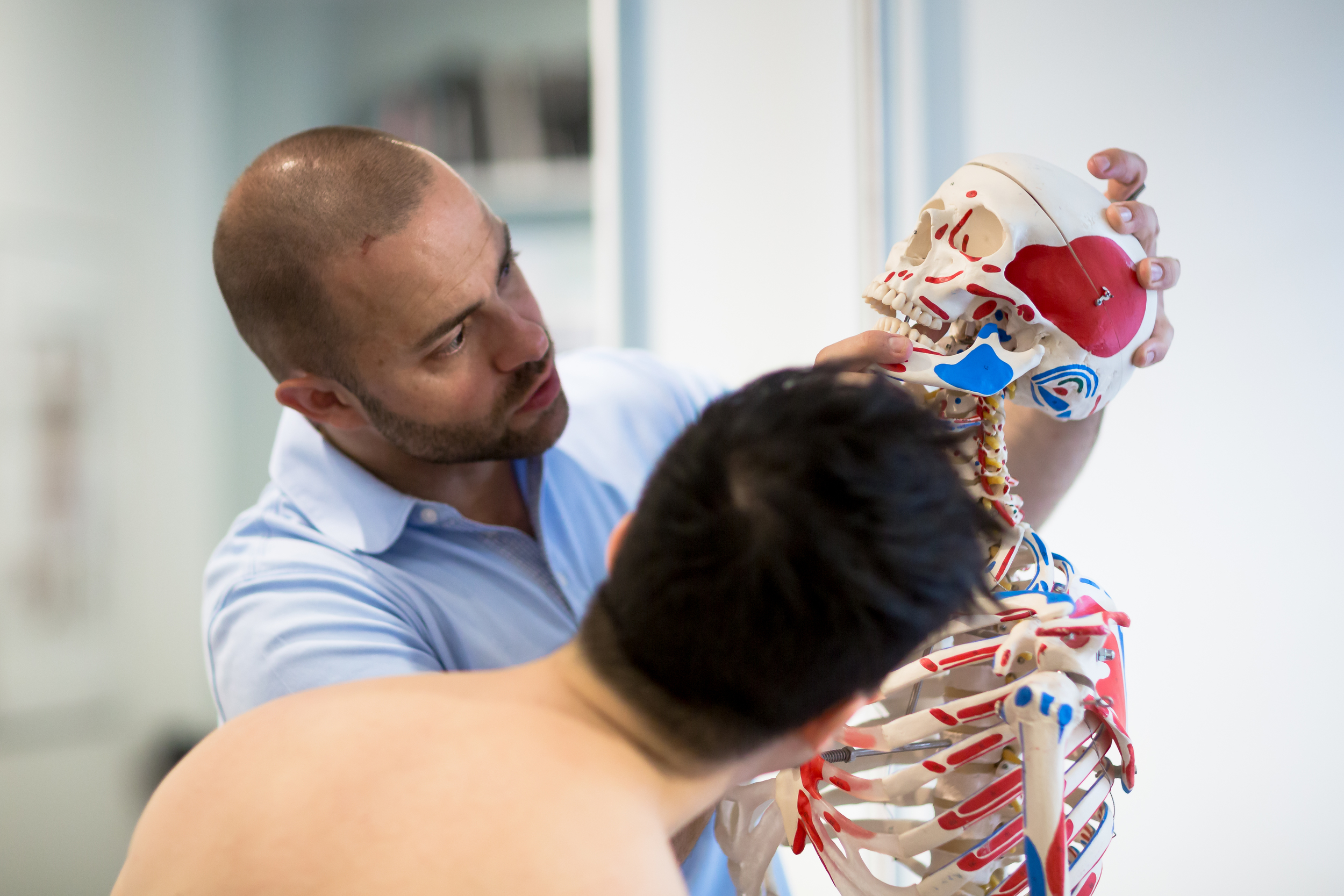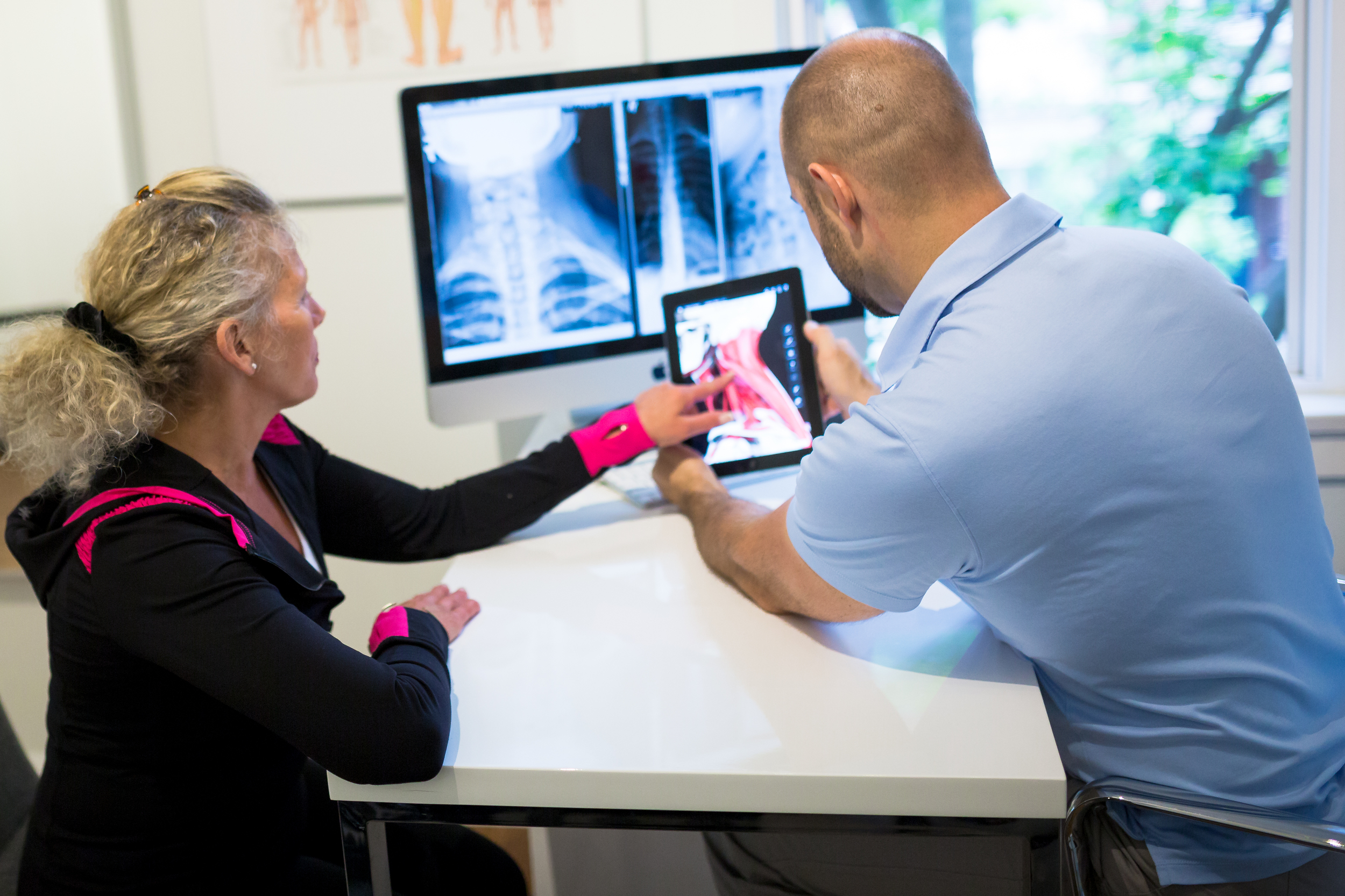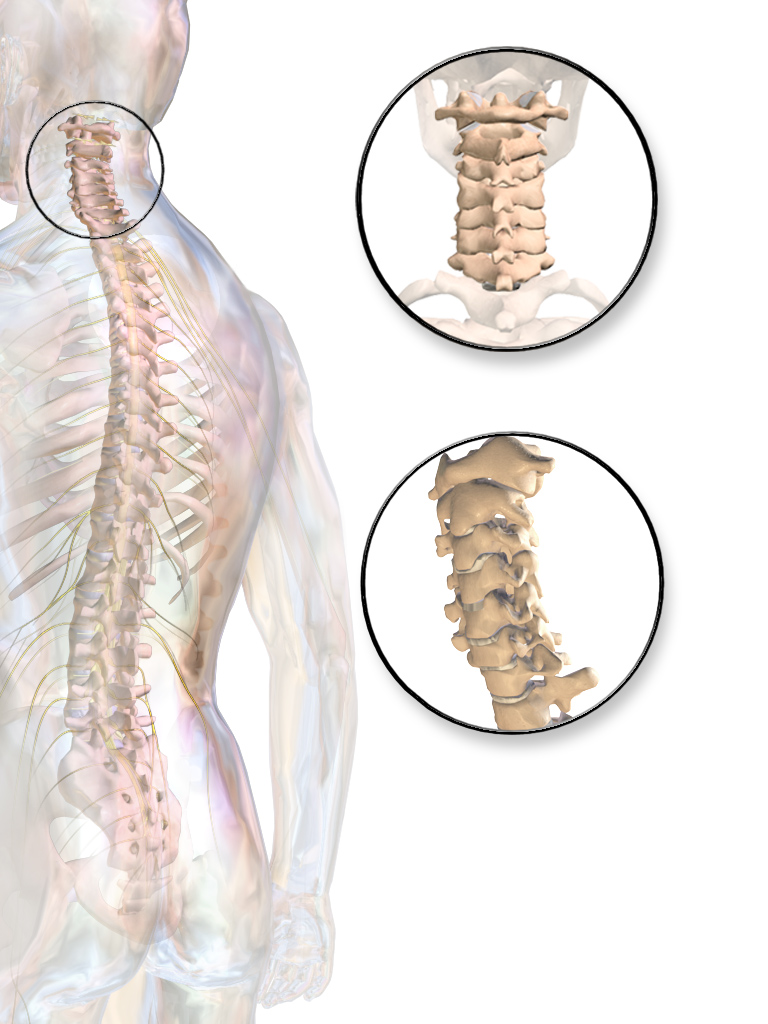Neck Conditions
Conditions associated with the neck can range from simple discomfort to severe pain preventing you from moving your head and neck or pain running down your back or arms. This can be due to a previous or recent injury, poor posture or a repetitive motion. In many cases, trauma is the first insult or repetitive trauma such as poor posture or poor breathing habits that leads to continued irritation of the structures of your neck, leading to further wear and tear on those muscles and joints. To find out more about the neck anatomy please scroll down to the bottom
Who gets neck pain and what are the causes?
Neck pain is very common. More than 50% of the world population will develop a bout of neck pain at some time in their life. It is estimated that in industrial nations like Canada, USA and Europe, approximately 20% of adults aged 45-75 years of age will be suffering from some sort of neck pain – right now! Neck pain that limits activity occurs in approximately 10% of the general adult population per year and 10% of people will find their neck pain disabling.
There are usually multiple factors that contribute to an individual’s neck pain, including overall physical and mental health, work and daily activities. Stress plays a critical role for chronic neck pain. This is due to poor breathing habits that come about due to stress (you become a neck rather than belly breather) and the postures people assume when they are stressed further compounds the issues that incorrect breathing techniques create. Of course, neck strength and stability both play important roles especially when considering the re-occurrence of neck pain.
When asking, what causes neck pain, well the answer is, it depends. It often depends on the type of neck pain someone is experiencing and if there has been trauma involved in the onset of the pain (which I find there always is, regardless of how trivial someone believes their trauma to be).
Types of Neck Conditions
- Mechanical Neck Pain
- Whiplash (Whiplash Associated Disorder)
- Myofascial Pain Syndrome – Trigger Points and "Knots in the Shoulders"
- Cervical Spondylosis (Degenerative Osteoarthritis)
- Cervical Radiculopathy
A Brief Anatomy Lesson of the Cervical Spine (AKA the Neck)
The cervical spine consists of seven bones called vertebrae, separated from one another by an intervertebral disc which acts as a shock absorbing structure and helps to allow the neck and head to move freely. Each disc consists of a "nucleus pulposis" (of pulpy consistency) in its centre, surrounded and contained by the tough fibrous membrane called the "annulus fibrosis" which is attached all around to the adjacent vertebral bodies. The cervical spinal column provides strong, flexible support of the head and protection of the spinal cord.
Attached to the back of each vertebral body are two pedicles, an arch of bone called the lamina, that creates a hollow space, and contains the spinal cord and spinal nerves. At each vertebral level a pair of spinal nerves (right and left "nerve roots") exits from the spinal column through openings called foramina. These nerves supply sensation to the skin and power to the muscles of the neck, arms and hands. The spinal cord carries the motor and sensory nerve pathways to the trunk and legs, including nerves that control bowel, bladder and sexual function. The spinal cord and nerve roots are enclosed in a tough membrane called the dura, inside of which is a flimsy membrane called the arachnoid, containing the clear colourless spinal fluid which bathes the spinal cord and nerves.
Each vertebra is connected to the vertebrae above and below by several strong ligaments as well as by the discs. Small uncovertebral joints are located at the sides of each vertebral body (right and left), by which each vertebral body attaches with is neighbours. Right and left "facet" joints also support the spinal column, and each vertebra also connects with its neighbours at the facet joints; they are located behind the vertebral bodies and lateral to the laminae.
Large strong muscles run the length of the cervical spine, in front, beside and behind the vertebral column, maintaining and controlling head position and neck movement.
Call Now to Receive Care for Your Neck Condition
647.560.4495
DISCLAIMER: The above information is intended to be used as a guide and should not be used in place of a proper evaluation and diagnosis from a regulated health care professional. If you have any questions about your condition, please feel free to contact me at your convenience.




